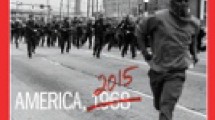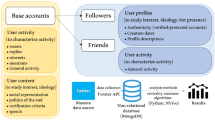Abstract
The Contextual Focal Structure Analysis (CFSA) model is a sophisticated approach enhancing the discovery and interpretability of focal structure spreaders on social networks, similar to the users’ dynamic interactions on Twitter. Leveraging the power of the multiplex networks approach, the CFSA model organizes data into multiple layers, allowing for a comprehensive examination of various user activities and their interests within social networks. The core of the CFSA model uses the users-users network layer to capture the complex interactions between users and obtain a deeper understanding of users’ engagements on the platform. The CFSA model incorporates hashtag co-occurrence networks as the second layer; it helps unveil the associations and relationships between hashtags mentioned on Twitter. To evaluate the effectiveness of the CFSA model, the study focused on the Cheng Ho disinformation narrative within the Indo-Pacific region. This analysis utilized a substantial dataset comprising over 64,519 tweets and 20,000 hashtags collected between January 2019 and October 2022. The findings revealed users’ activities and the supplementary contexts established through their engagement with different hashtags. These insights shed light on the intricate interplay between users, communities, and the content that shapes the discourse within the Indo-Pacific region. Impactful contextual focal structure sets emerged as key elements driving the conversation in the examined disinformation narrative within the dataset. The CFSA model exposes significant patterns of popular hashtags such as “#SouthChinaSea,” “#NavyPartnerships,” and “#United_States”. Part of these hashtags were linked to accounts disseminating information concerning oil and gas exploration and drilling operations, mainly undertaken by the NATO alliances and China.
Access this chapter
Tax calculation will be finalised at checkout
Purchases are for personal use only
Similar content being viewed by others
References
Global Affairs Canada. Canada’s Indo-Pacific Strategy (2022). https://www.international.gc.ca/transparency-transparence/indo-pacific-indo-pacifique/index.aspx?langueng. Accessed 24 Mar 2023
House, T.W.: Indo-Pacific Strategy of the United States (2022). https://www.whitehouse.gov/wp-content/uploads/2022/02/U.S.-Indo-Pacific-Strategy.pdf. Accessed Mar 2023
Power Shifts in the Indo–Pacific|Foreign Policy White Paper. https://www.dfat.gov.au/sites/default/files/minisite/static/4ca0813c-585e-4fe1-86eb-de665e65001a/fpwhitepaper/foreign-policy-white-paper/chapter-two-contested-world/power-shifts-indo-pacific.html. Accessed Mar 2023
China’s Rise and the Implications for the Indo-Pacific | ORF. https://www.orfonline.org/expert-speak/chinas-rise-and-the-implications-for-the-indo-pacific/. Accessed Mar 2023
Shajari, S., Agarwal, N., Alassad, M.: Commenter Behavior Characterization on YouTube Channels. arXiv preprint https://arxiv.org/abs/2304.07681v1 (2023)
Alassad, M., Agarwal, N.: Uncovering the dynamic interplay of YouTube co-commenter connections through contextual focal structure analysis. In: eKNOW 2023, The Fifteenth International Conference on Information, Process, and Knowledge Management, pp. 65–70 (2023)
China’s Columbus’ Was an Imperialist Too. Contesting the Myth of Zheng He|Small Wars Journal (2023). https://smallwarsjournal.com/jrnl/art/chinas-columbus-was-imperialist-too-contesting-myth-zheng-he. Accessed Mar 2023
Şen, F., Wigand, R., Agarwal, N., Tokdemir, S., Kasprzyk, R.: Focal structures analysis: identifying influential sets of individuals in a social network. Soc. Netw. Anal. Min. 6(1), 1–22 (2016)
Alassad, M., Agarwal, N., Hussain, M.N.: Examining intensive groups in YouTube commenter networks. In: Thomson, R., Bisgin, H., Dancy, C., Hyder, A. (eds.) SBP-BRiMS 2019. LNCS, vol. 11549, pp. 224–233. Springer, Cham (2019). https://doi.org/10.1007/978-3-030-21741-9_23
Alassad, M., Hussain, M.N., Agarwal, N.: Developing graph theoretic techniques to identify amplification and coordination activities of influential sets of users. In: Thomson, R., Bisgin, H., Dancy, C., Hyder, A., Hussain, M. (eds.) SBP-BRiMS 2020. LNCS, vol. 12268, pp. 192–201. Springer, Cham (2020). https://doi.org/10.1007/978-3-030-61255-9_19
Alassad, M., Hussain, M.N., Agarwal, N.: Finding fake news key spreaders in complex social networks by using bi-level decomposition optimization method. Commun. Comput. Inf. Sci. 1079, 41–54 (2019)
Alassad, M., Spann, B., Agarwal, N.: Combining advanced computational social science and graph theoretic techniques to reveal adversarial information operations. Inf. Process. Manag. 58(1), 102385 (2021)
Alassad, M., Agarwal, N.: A systematic approach for contextualizing focal structure analysis in social networks. In: Thomson, R., Dancy, C., Pyke, A. (eds.) Social, Cultural, and Behavioral Modeling, pp. 46–56. Springer, Cham (2022). https://doi.org/10.1007/978-3-031-17114-7_5
Chugh, R., Ruhi, U.: Social media for tertiary education. In: Tatnall, A. (ed.) Encyclopedia of Education and Information Technologies, pp. 1–6. Springer, Cham (2019). https://doi.org/10.1007/978-3-319-60013-0_202-1
Girvan, M., Newman, M.E.J.: Community structure in social and biological networks. Proc. Natl. Acad. Sci. 99(12), 7821–7826 (2002)
Acknowledgment
This research is funded in part by the U.S. National Science Foundation (OIA-1946391, OIA-1920920, IIS-1636933, ACI-1429160, and IIS-1110868), U.S. Office of the Under Secretary of Defense for Research and Engineering (FA9550-22-1-0332), U.S. Office of Naval Research (N00014-10-1-0091, N00014-14-1-0489, N00014-15-P-1187, N00014-16-1-2016, N00014-16-1-2412, N00014-17-1-2675, N00014-17-1-2605, N68335-19-C-0359, N00014-19-1-2336, N68335-20-C-0540, N00014-21-1-2121, N00014-21-1-2765, N00014-22-1-2318), U.S. Air Force Research Laboratory, U.S. Army Research Office (W911NF-20-1-0262, W911NF-16-1-0189, W911NF-23-1-0011), U.S. Defense Advanced Research Projects Agency (W31P4Q-17-C-0059), Arkansas Research Alliance, the Jerry L. Maulden/Entergy Endowment at the University of Arkansas at Little Rock, and the Australian Department of Defense Strategic Policy Grants Program (SPGP) (award number: 2020-106-094). Any opinions, findings, and conclusions or recommendations expressed in this material are those of the authors and do not necessarily reflect the views of the funding organizations. The researchers gratefully acknowledge the support.
Author information
Authors and Affiliations
Corresponding author
Editor information
Editors and Affiliations
Rights and permissions
Copyright information
© 2024 The Author(s), under exclusive license to Springer Nature Switzerland AG
About this paper
Cite this paper
Alassad, M., Agarwal, N., Nwana, L. (2024). Uncovering Latent Influential Patterns and Interests on Twitter Using Contextual Focal Structure Analysis Design. In: Cherifi, H., Rocha, L.M., Cherifi, C., Donduran, M. (eds) Complex Networks & Their Applications XII. COMPLEX NETWORKS 2023. Studies in Computational Intelligence, vol 1144. Springer, Cham. https://doi.org/10.1007/978-3-031-53503-1_28
Download citation
DOI: https://doi.org/10.1007/978-3-031-53503-1_28
Published:
Publisher Name: Springer, Cham
Print ISBN: 978-3-031-53502-4
Online ISBN: 978-3-031-53503-1
eBook Packages: EngineeringEngineering (R0)




